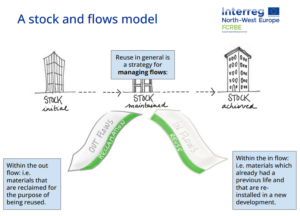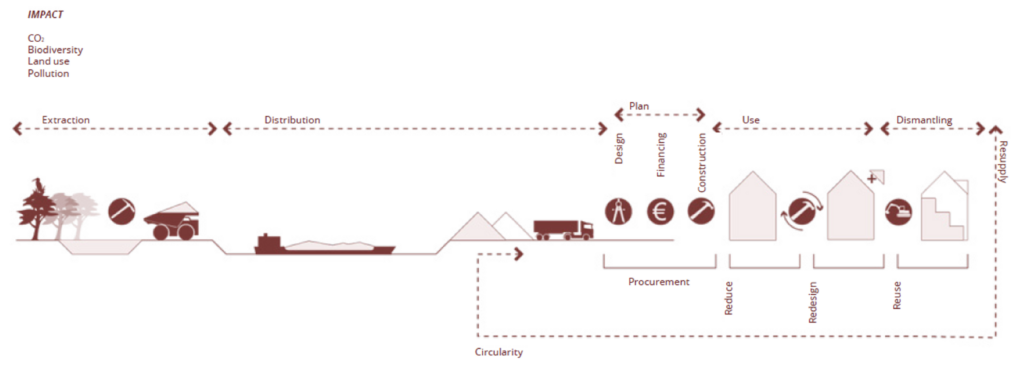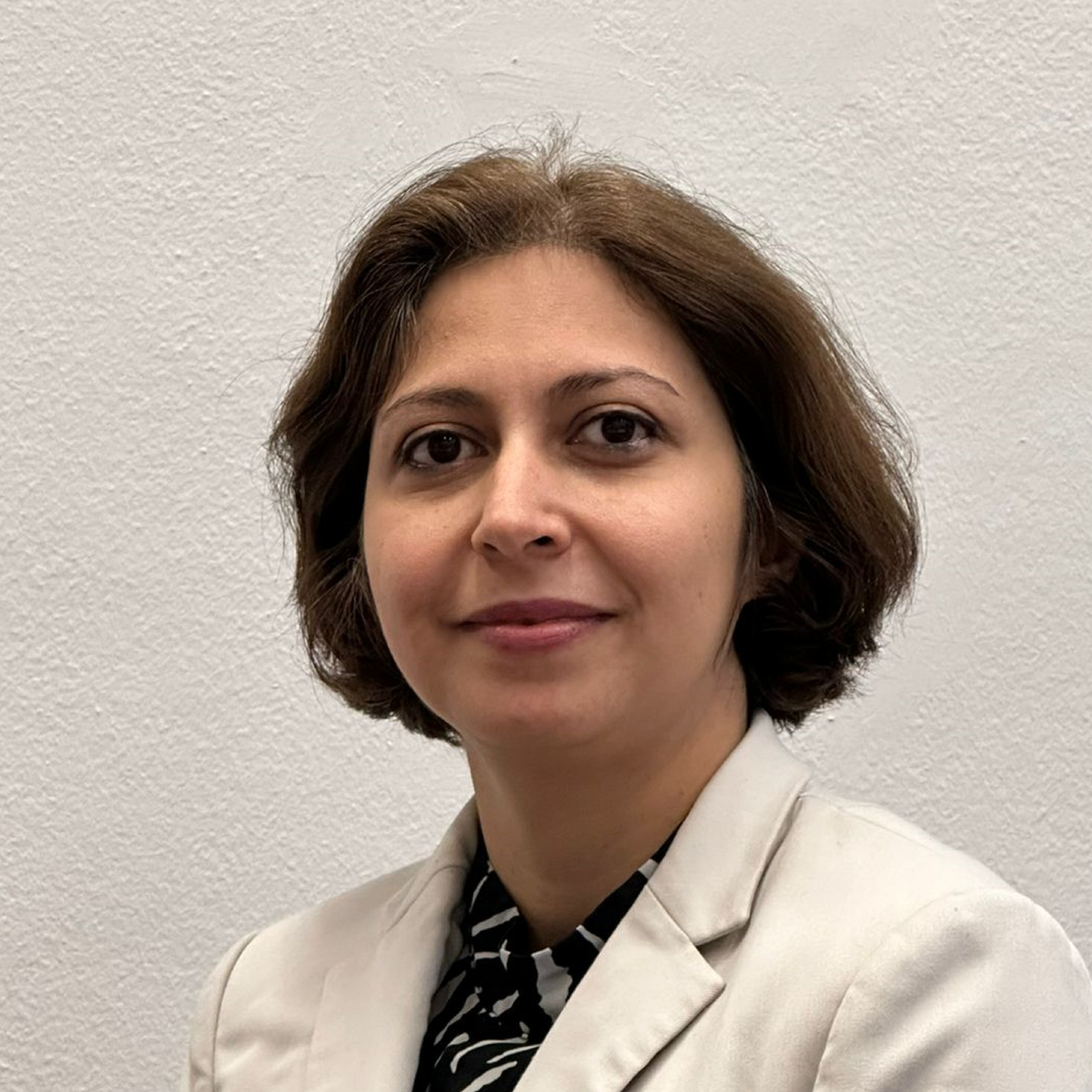Scales to Aspects Interdisciplinary Encounters
Maximizing Resource Use and Setting Reuse Rate
In this video, Elham describes the importance of prioritizing reuse and setting reuse targets. She further discusses the reclamation audits and what type of information can potentially influence material reuse rates.
Main Takeaways
- Any construction or renovation project will result in material movement (flows). Circular Economy (CE) aims to limit material movements in favor of preserving material stocks.
- A reclamation audit is a process that evaluates materials’ potential for reuse thus ensuring that the identified elements are separated from waste.
- Setting reuse goals should be based on concrete and relevant information and relies on multiple social, economic, environmental and cultural aspects that sometimes outweigh the quantitative ones.
Further Reading
- A Roadmap to Foster Reuse Practices in the Construction Sector: A collection of inspiring actions for public authorities, Emilie Gobbo, Michaël Ghyoot, Corinne Bernair, Anne Paduart, report as part of the project Interreg NWE 739: Facilitating the Circulation of Reclaimed Building Elements (FCRBE), Brussels, November 2021. Roadmap available here.
- Reuse in Environmental Impact Assessment Tools; A prospective report, Emilie Gobbo, Michaël Ghyoot, Anne Paduart, Mona Nasseredine, report as part of the project Interreg NWE 739: Facilitating the Circulation of Reclaimed Building Elements (FCRBE), October 2018 – January 2022. Report available here.
- Reuse in Green Building Frameworks, Michaël Ghyoot, Susie Naval, Beate Zavadska, Dries Van Hout, report as part of the project Interreg NWE 739: Facilitating the Circulation of Reclaimed Building Elements (FCRBE), October 2018 – January 2022. Report available here.
- The Circular Construction Economy Transition Agenda, 2018, https://circulairebouweconomie.nl/about-us/
- Célia Chaussebel, Mathilde Doutreleau, Gaspard Geerts, Michaël Ghyoot, Emilie Gobbo, Elodie Macé, Elham Maghsoudi Nia, Victor Meesters, Martine Mouchet, Mona Nasseredine, Marie-Annick Rabefiraisana, Charline Richard, Ad Straub, 2023, Set, Monitor and Report on Reclamation and Reuse Rates in Construction Projects, Part of the Interreg NWE 739 FCRBE project (Facilitating the Circulation of Reclaimed Building Elements). Report available here.
- Célia Chaussebel, Mathilde Doutreleau, Gaspard Geerts, Michaël Ghyoot, Emilie Gobbo, Elodie Macé, Elham Maghsoudi Nia, Victor Meesters, Martine Mouchet, Mona Nasseredine, Marie-Annick Rabefiraisana, Charline Richard, Ad Straub, 2023, Ex-Post Analysis of 32 Construction and Renovation Works, Part of the Interreg NWE 739 FCRBE project (Facilitating the Circulation of Reclaimed Building Elements). Report available here.
- Célia Chaussebel, Mathilde Doutreleau, Gaspard Geerts, Michaël Ghyoot, Emilie Gobbo, Elodie Macé, Elham Maghsoudi Nia, Victor Meesters, Martine Mouchet, Mona Nasseredine, Marie-Annick Rabefiraisana, Charline Richard, Ad Straub, 2023, 32 Detailed Project Sheets: Projects Info, Reuse Rates and Reused Elements, Part of the Interreg NWE 739 FCRBE project (Facilitating the Circulation of Reclaimed Building Elements). Report available here.










